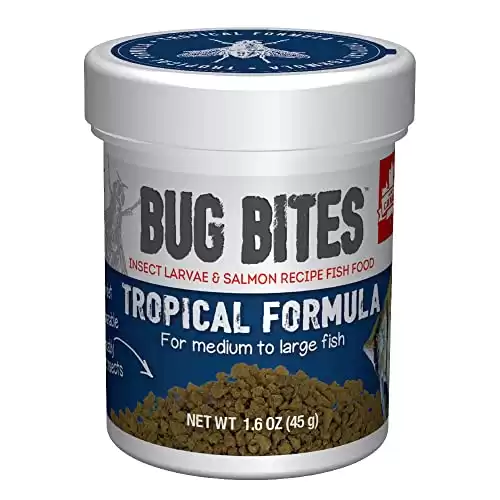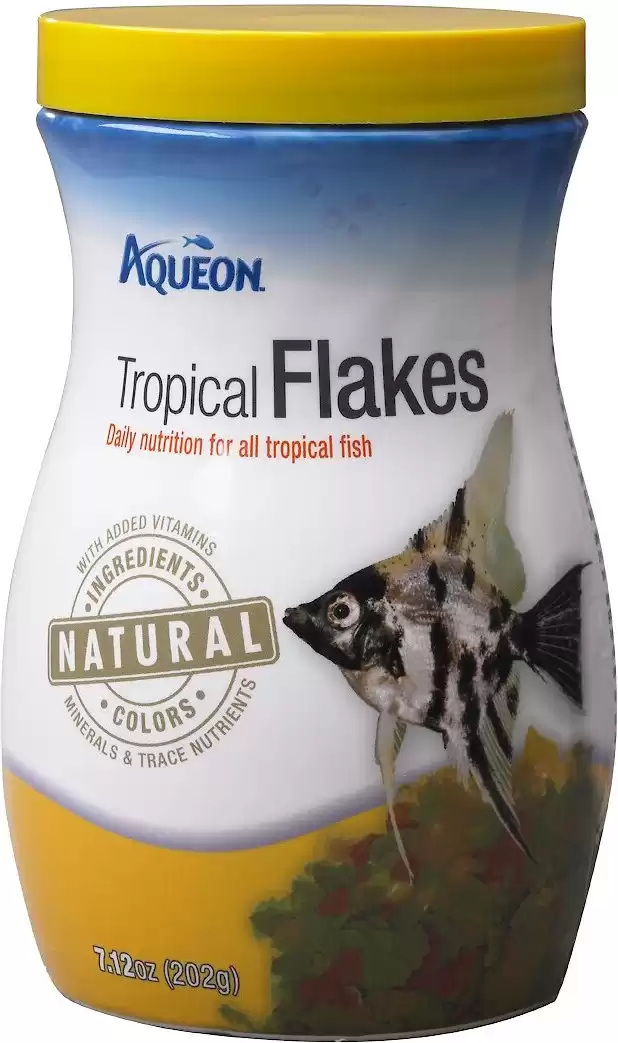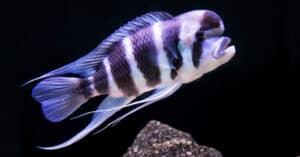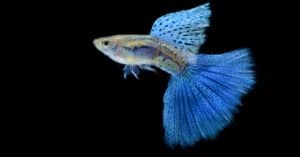They are often mistaken for actual sharks, but this is a misconception. Bala sharks are voracious eaters native to the rivers and lakes of Borneo, Sumatra, and the Malay Peninsula in Southeast Asia. They are found in freshwater environments where they feed on small crustaceans, plants, insects, and larvae.
The Bala shark grows to be relatively large, even in captivity. A healthy Bala shark with a very large tank will grow to about 12 inches long. They love swimming and need lots of food. To carry out its natural behavior, your Bala shark requires a very large aquarium and different types of food.
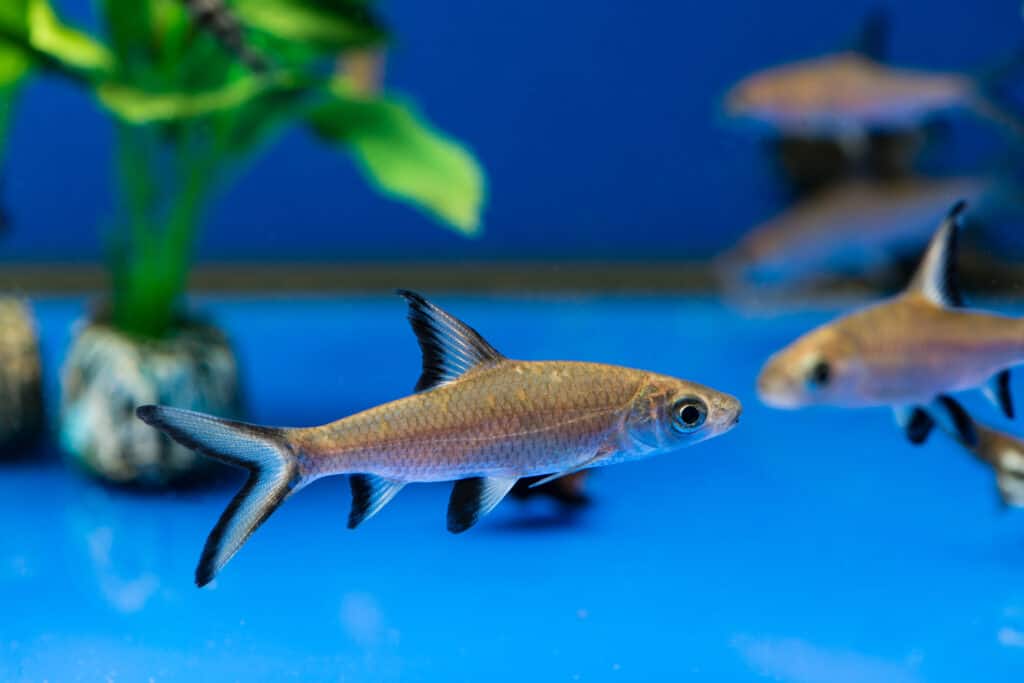
Bala sharks require fairly large aquariums — ideally 120-150 gallons.
©smspsy/Shutterstock.com
The Bala Shark Is a Popular and Hardy Freshwater Fish in the Aquarium Hobby
Their color, shape, and mouth give them a shark-like appearance, but Bala sharks are not sharks; they are related to the carp family. The name comes from how they swim: like a shark with its mouth wide open. Unlike sharks, they do not bite or chew their food. They suck in food through their open mouths.
Bala sharks are omnivores and eat most aquarium foods (including flakes, pellets, live, and frozen food). They also enjoy eating algae and some plant materials, which are a natural part of their diet in the wild.
- Blended to enhance omega-6 fatty acid levels to promote strong immune systems
- Color boosting
- Naturally insoluble, so they reduce water pollution and fish waste
- No pre-processed protein
The Bala Shark Is an Active and Schooling Fish That Requires Plenty of Space To Swim
As a schooling fish, Bala sharks do best when there are at least three in the tank, and they have plenty of space to swim. Even though they are not technically sharks, they are active and need room to move around.
You can keep your Bala sharks in large groups with other peaceful species like catfish or clown loaches. They may even get along with other medium-to-large, peaceful fish if you house them in the same aquarium.
Your Bala sharks will appreciate resting places inside the aquarium to hide when tired of swimming. Aquarium plants and roots make a great cover.
Avoid putting Bala sharks into an aquarium with aggressive fish or fish small enough to be their food. When you have a nice big tank with lots of swimming space, your Bala sharks can be happy for many years.
- Contain up to 40% of nutrient-rich Black Soldier Fly Larvae -- the first ingredient
- High in a variety of proteins, including whole salmon, which contains omega fatty acids and minerals
- Slow-sinking granules so fish can eat at their preferred depth
- Made in Canada
- Contains no artificial fillers, colors, or preservatives
The Bala Shark Is an Omnivore
In nature, the Bala shark is an omnivore. It eats a varied diet of bony fish, invertebrates, and plants. In the home aquarium, it is essential to provide a varied diet to ensure that you meet all of their nutritional needs.
Bala sharks will eat frozen brine shrimp, bloodworms, and plankton. They can also eat flake or pelletized foods, but these are not as nutrient-rich and beneficial as live or frozen foods and some plant matter (such as algae in the aquarium).
A variety of higher-quality foods will prevent your Bala sharks from becoming malnourished, which makes them more vulnerable to common fish diseases and ailments.
- Made from whole fish meal
- No artificial coloring
- Comes in a large container
- Bring out the natural colors of your fish
Feed Bala Sharks Small Amounts of Food Several Times Daily
Bala sharks will eat anything you feed them and in large quantities. In the wild, food isn’t always available. They are used to getting as much food as they can when it’s available and surviving on algae in between. So, even if you feed them every day, they will gorge themselves if you offer a lot of food at once.
In the home aquarium, feeding the fish three or four times daily with small amounts of food instead of one large feeding is best. Because they are highly active, this will result in a happier and healthier animal.
The best approach is to feed your Bala shark at consistent intervals, such as every two or three hours. Give them the amount they can eat within about two minutes – making sure there is enough for everybody!
Flakes and Pellets are Good Staple Foods for Bala Sharks
Are your fish hungry? If you have Bala sharks, it’s probably time to feed them again.
The Bala shark is an easygoing and docile species, but as with all captive fish, it needs to be fed a nutritious diet in order to thrive. That means high-quality dried food, like flakes and pellets, should make up the bulk of their diet. Look for foods like those they would eat in the wild – that provide the vitamins, minerals, and proteins they require to grow to their full potential.
You can feed your Bala sharks the same pellets and flakes you would feed other freshwater fish. It is best to rotate several different types of food for your Bala sharks, so they do not get bored eating the same thing every day.
The smaller pieces of pellets and flakes help them maintain efficient digestion since there is less material for digestive enzymes to break down at once, which uses less energy. Bala sharks also don’t chew their food, so smaller pieces are easier to eat.
Feed Your Bala Sharks Frozen Foods Such As Bloodworms, Brine Shrimp, Daphnia, and Plankton
Frozen foods are an excellent staple for your Bala shark. Frozen bloodworms, brine shrimp, Daphnia, and plankton are all nutrient-rich choices your Bala sharks will love. They are also easy to store and serve.
If you have access to live foods, your Bala sharks will devour them as well. Live foods that are good for Bala sharks include Daphnia, bloodworms, brine shrimp, mosquito larvae, and tubifex worms.
Avoid feeding them anything that is too large or too hard. If it doesn’t fit easily into their mouths, they won’t be able to eat it properly.
The Bala Shark Requires a Very Large Aquarium
The Bala Shark requires a very large aquarium if it’s going to have enough space for swimming and carrying out its natural behavior. The suggested range is between a 120 and 150-gallon tank, which is a big aquarium.
Bala sharks are schooling fish, so you should be able to keep at least five balas in the same tank. If you have several fish, they may need even more room. In general, it’s wise to get a tank on the large side of the recommended minimum.
Is a Bala Shark Right for You?
If you want to add a few Bala sharks to your large aquarium, you need to know what they eat. Since they need a variety of nutrient-rich foods delivered at regular intervals, their diets can make or break your experience with the fish.
The Bala shark is a voracious eater that will consume anything that fits into its mouth. However, you want to give your Bala sharks the best chance of growing to their true potential. In that case, a steady diet of flakes and pellets supplemented with fresh or frozen Daphnia, bloodworms, brine shrimp, mosquito larvae, plankton, or tubifex worms will make your Bala sharks happy and healthy.
UP NEXT:
Is Putting Pet Sharks in an Aquarium a Good Idea?
How Many Sharks are There in the World?
Pet Fish Guide: What You Need to Know
The photo featured at the top of this post is © smspsy/Shutterstock.com
Thank you for reading! Have some feedback for us? Contact the AZ Animals editorial team.





